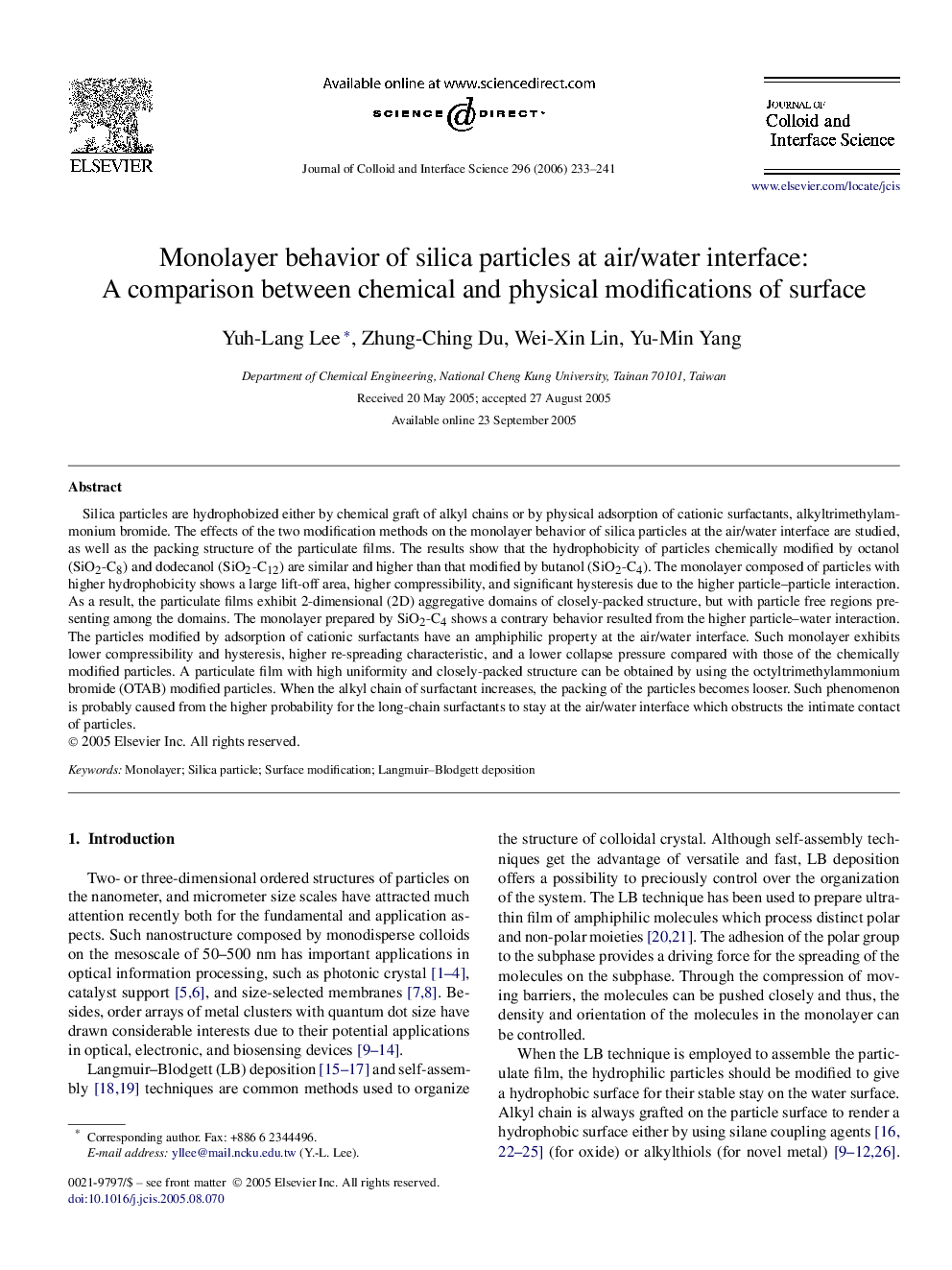| Article ID | Journal | Published Year | Pages | File Type |
|---|---|---|---|---|
| 613517 | Journal of Colloid and Interface Science | 2006 | 9 Pages |
Silica particles are hydrophobized either by chemical graft of alkyl chains or by physical adsorption of cationic surfactants, alkyltrimethylammonium bromide. The effects of the two modification methods on the monolayer behavior of silica particles at the air/water interface are studied, as well as the packing structure of the particulate films. The results show that the hydrophobicity of particles chemically modified by octanol (SiO2-C8) and dodecanol (SiO2-C12) are similar and higher than that modified by butanol (SiO2-C4). The monolayer composed of particles with higher hydrophobicity shows a large lift-off area, higher compressibility, and significant hysteresis due to the higher particle–particle interaction. As a result, the particulate films exhibit 2-dimensional (2D) aggregative domains of closely-packed structure, but with particle free regions presenting among the domains. The monolayer prepared by SiO2-C4 shows a contrary behavior resulted from the higher particle–water interaction. The particles modified by adsorption of cationic surfactants have an amphiphilic property at the air/water interface. Such monolayer exhibits lower compressibility and hysteresis, higher re-spreading characteristic, and a lower collapse pressure compared with those of the chemically modified particles. A particulate film with high uniformity and closely-packed structure can be obtained by using the octyltrimethylammonium bromide (OTAB) modified particles. When the alkyl chain of surfactant increases, the packing of the particles becomes looser. Such phenomenon is probably caused from the higher probability for the long-chain surfactants to stay at the air/water interface which obstructs the intimate contact of particles.
Graphical abstractThe surface of silica particles are chemically grafted by alkyl chain (left), or modified by adsorption of surfactant (right). The behaviors of such particles at air/water interface were studied.Figure optionsDownload full-size imageDownload as PowerPoint slide
